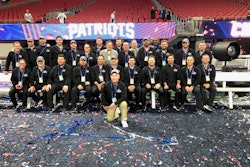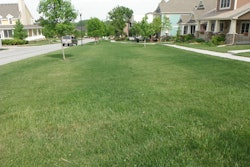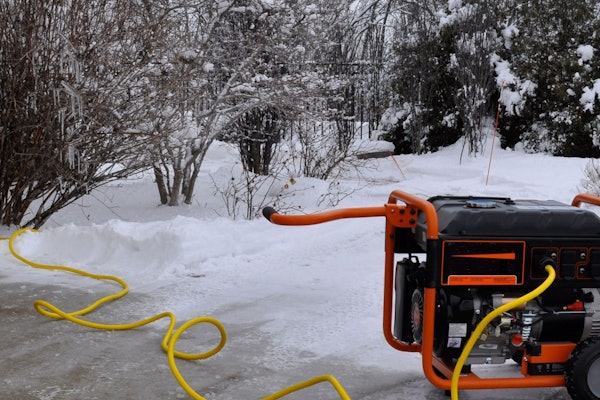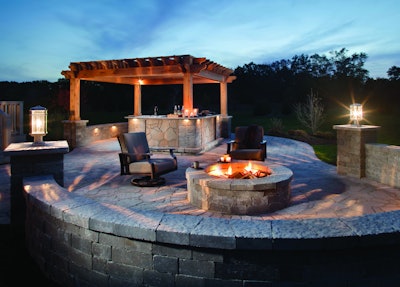 Photo: Belgard
Photo: BelgardBusiness is booming for many landscapers and with the ongoing labor shortage, plenty of landscaping companies have an abundance of potential customers reaching out to them that they don’t know what to do with.
When companies are drinking from a firehose of job opportunities, it can sometimes be easy to blow through estimates without truly considering each project’s possibilities.
Joe Raboine, director of residential hardscapes for Belgard, says that most of the landscapers he talks to tend to make three to five visits in order to sell an outdoor living project, and this results in 20 to 25 hours of time invested into a project.
“If they’ll spend more time up front really understanding the client and then provide them with a better design and better presentation, they can boil that down to about 5-10 hours,” Raboine says. “In a way, it’s saying hey, slow down and try to understand the client more and then maximize those opportunities more than just checking off a box to say, ‘Hey I gave them an estimate and I’m on to the next estimate.’”
Solution selling
This sort of mindset is known as solution selling and it starts with the very first consultation you have with the homeowner.
The majority of customers who want an outdoor living space may struggle with actually articulating what they are looking for. If a customer says they want a patio and all you are looking to do is complete the estimate, then you will tend to only focus on asking questions about the dimensions of the patio and possible materials the client wants to use.
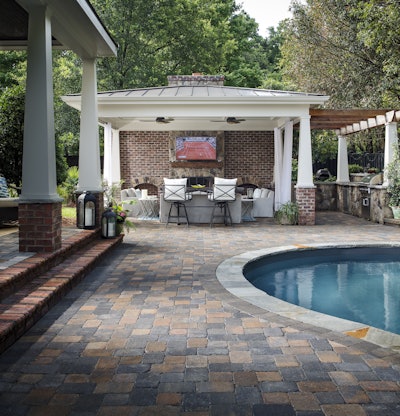 Photo: Belgard
Photo: BelgardRaboine says that instead of taking the customer’s request at face value, landscapers should take a step back and figure out what the homeowner is looking to achieve with the space. After talking to them for a little bit, you may discover that they want to use the space primarily in the evening. If this is the case, you might want to suggest including outdoor lighting in the design to help create a more comprehensive solution.
Landscape contractors can miss out on solution selling when they are thinking about a service in the context of their own mind or are only focused on a particular job type.
“A lot of contractors are like, ‘Well, I don’t do lighting,’ so they won’t even bring it up, but we’ll hear from clients after the fact, ‘I spent $30,000 and I realized after it was installed that I need lighting, and now it’s going to cost me double because they didn’t run the wiring and it’s hard to retrofit,’” Raboine says. “Even if they don’t do these projects, they should be promoting some of these additional things just to help the client and really be that solution-based contractor.”
Some the additional landscape features that can be suggested include shade structures like pergolas and pavilions, outdoor lighting, heating sources and even irrigation. Basically, any element that can help enhance an outdoor space or meet a specific customer’s needs should be considered. When making suggestions, there’s never a need to push too hard, but you should bring things to the homeowner’s attention if it will help them in the long run, such as running electrical lines for lighting later down the road.
“You want the client to be happy,” Raboine says. “You don’t want them to feel taken advantage of. It’s really important to sincerely strive to give the client what they want and what you feel is best for them. If they feel that you’re just doing things in your own self-interest, that could destroy the relationship.”
Raboine says that the landscape contractors who are currently thriving are the ones who find other contractors to partner with so they can meet the needs of their client and not force them to work with 10 individual companies in order to create their outdoor living space.
“People want these spaces but sometimes the frustration of buying them and putting them all together piecemeal, they’ll just give up sometimes,” he says. “They’ll say, ‘You know what, I’m just not going to do it. It’s just too much work.’ Which is unfortunate.”
Phased landscaping projects
Sometimes you may not feel comfortable suggesting a number of additions to a potential client’s landscape out of fear they might get sticker shock and give up on the project entirely.
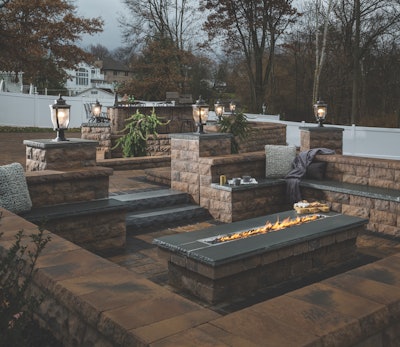 Photo: Belgard
Photo: BelgardYet Raboine says often customers are receptive to having their landscaping phased in over time as long as there is a master plan. Also, phasing projects in can help save time and money by installing gas and electrical lines prior to construction is far easier than trying to retrofit an outdoor space after it has been built.
“I think the consumers really appreciate that,” Raboine says. “Again, none of this has to be a hard sell. It’s just the presentation and if you approach it and say, ‘I realize this is $100,000 job, if you want to do half now or $15,000 or $20,000 over the next several years and we’ll just plan for it.”
Things that Raboine says landscapers should consider when carrying out phased designs is to understand what might be required from a permitting perspective and to order extra material to ensure any hardscaping will match up no matter how long the project takes.
“I think it’s just a matter of suggesting and then pulling it all together with a quality presentation, especially a three-dimensional design or render really helps convey it,” he says. “A lot of times if people have the means where they see it and understand it fully, they’ll make the decision more often than not to make the decision to move forward with the majority of it.”
Pre-built kits
One way to streamline your jobs once you’ve determined what all your customers need is to invest in pre-built, modular products.
These kits include elements like fire pits and grill islands, like Belgard’s new Weston Stone grill island, fireplace and fire pit kits. The kits use pre-existing products and come with a layer-by-layer and color-coded guide for the building process. These take, on average, four hours to install.
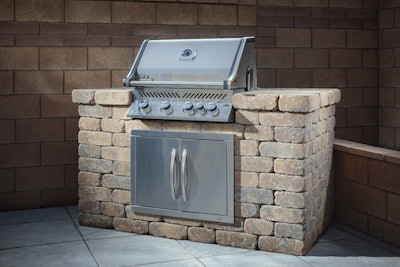 The new Weston Stone grill island kit is a cost effective way to enhance spaces that have pre-existing Belgard products.
The new Weston Stone grill island kit is a cost effective way to enhance spaces that have pre-existing Belgard products.Photo: Belgard
Raboine says contractors are often uncertain how to price them since they go in so quickly. He says they need to look at what the value proposition is versus site building a feature.
“Consumers do appreciate the speed and consistency of pre-built,” he says. “There are some clients who simply want custom every time to be unique, but I think those are still in the minority. A lot of people they say they want that but if it’s a trade-off between that and price, they’ll usually defer to the pre-built if it’s less expensive and still high quality.”
Raboine urges landscapers to rethink how they are approaching clients and the sale/design process. Try not to think of meeting with customers as just another task to complete, but take the time to figure out what problems they are trying to solve.
“When you solution sell, usually the jobs become larger and your profit margins go up because you’re not moving from job to job as often,” he says. “The number one thing the consumer say directly is, ‘I’m ready to do this job, but I can’t seem to find contractors who are willing to sit down and listen to us and really work with us to come up with something unique.’ They’re all rushed and they’re just looking to make a sale is the impression and that’s really unfortunate because there’s tons and tons of those projects potentially out there.”


